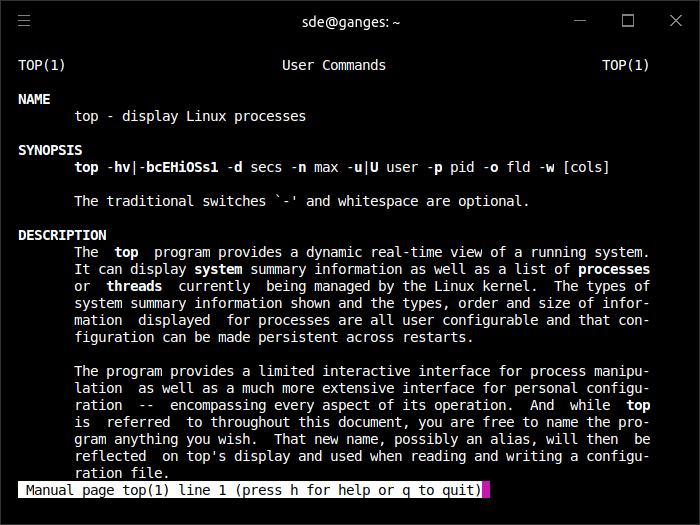Last Updated on May 22, 2022
Man Pages
Besides the Ubuntu Desktop Guide, your system comes with a whole collection of system reference manuals (known as man pages). There’s a man page for each command or program.
You can access the man pages from the terminal by issuing the command man followed by the command or program you want to learn about. For example, to learn about the ls command, type at a shell:
$ man ls
Many man pages include the following sections:
- NAME: The name of the command you are reading about.
- SYNOPSIS: Provides a succinct description of a few of the options available. It’s a technical notation of the options and/or arguments this command can take.
- DESCRIPTION: A more detailed description of the command including how it works, and what it does.
- OPTIONS: Describes in detail all the arguments or options you can use with the command.
- EXAMPLES: Shows you a few use cases and how the command can be used.
- AUTHOR: The name(s) of the program’s author(s).
- COPYRIGHT: Who owns the copyright to the software and what license it’s published under.
- SEE ALSO: A reference to other relevant man pages.
Here’s the man page for the top command.

You can move, search, jump using key presses. When viewing a man page press h to view all the keyboard shortcuts.
The system’s man pages contain a wealth of useful information. But sometimes it’s hard to see the wood for the trees. Even experienced users can be bamboozled by the sheer complexity of some man pages. Many tools have been in development for decades and have, over time, had feature upon feature added. Some commands and programs have a huge number of options.
The sheer number can make it difficult to quickly find what you are looking for, or to understand the key options that are available. Step forward tldr.
Pages in this article:
Page 1 – Ubuntu Desktop Guide
Page 2 – Man Pages
Page 3 – tldr
Page 4 – Other commands: whatis, apropos, info, command options
All articles in this series:

tldr is definitely worth installing. The man pages are often impenetrable to me. As you say Steve, listing every option without any order of importance is baffling to a beginner.
it has over 33,000 stars on GitHub
I suggest you take a look at explainshell
Great call